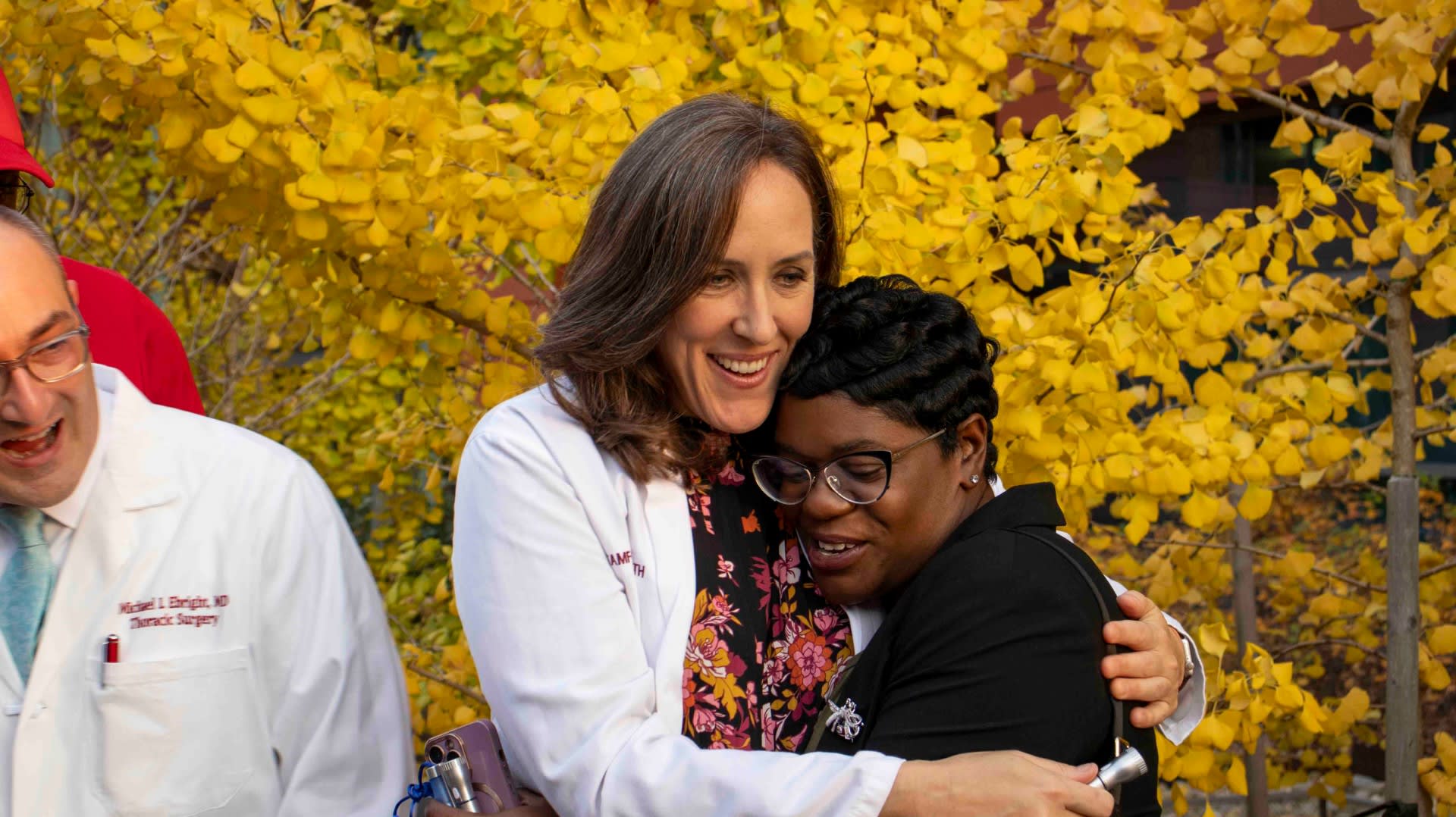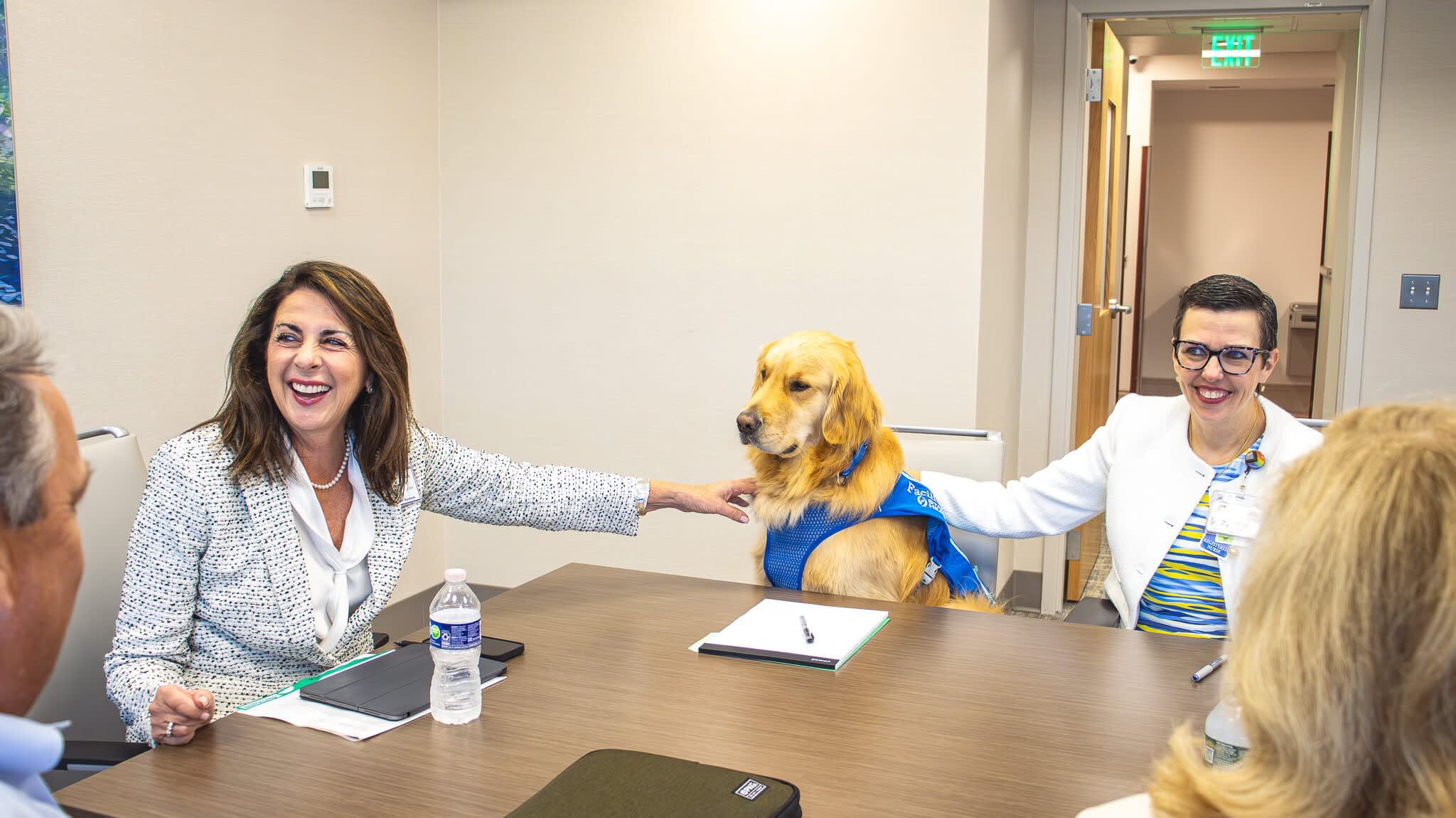Loneliness and isolation – like diabetes, obesity, and cardiovascular disease – represent an epidemic. You may know that May is Mental Health Awareness month, an opportune time to bring light to this crisis and how we can support ourselves, and each other.
Earlier this spring, I gave the keynote address at the 2024 Women’s Conference, an annual event organized by Christ Church Greenwich. In keeping with the theme of this year’s event, Mind, Body, Spirit, I addressed the crisis of loneliness and isolation, in southwestern Connecticut and across America.
These aren’t imaginary problems that people simply “get over.” They constitute a real epidemic, one that isn’t limited by geography, age, gender, occupation, race, ethnicity, or other factors. Loneliness and isolation threaten the health – mental, spiritual, and physical – of our entire population.
An advisory issued last spring by the U.S. Surgeon General, “Our Epidemic of Loneliness and Isolation,” provides perspective:
Loneliness and isolation have intensified amid the shift to remote work arrangements, ubiquitous mobile devices, and social media platforms that contribute to feelings of inadequacy. In the virtual world of social media, the measure of status isn’t friends; it’s followers. Our devices deprive us of real human interaction.
Health conditions exacerbated by loneliness and isolation are straining health care resources.
Every year in Connecticut, thousands of children experience severe mental health issues requiring long-term hospitalization. And almost every day, adolescents occupy beds at Stamford Hospital’s Emergency Department while awaiting admittance to long-term care facilities. Stamford Health has responded, expanding mental health services for adolescents, including the Youth Mental Health Alliance. One of our top priorities is continuing to grow our treatment capacity.
In short, better social connection help us live longer, healthier lives.
There’s a catch, we must act. Stamford Health’s chair of psychiatry, Dr. Raviv Berlin, recommends a few simple things anyone can do to increase social connection - turn off your devices, gather with family and friends, have a meal together, even just talk. We must rejoin our communities. Engage. Volunteer. Come together.
If you’re looking for ideas to increase social connections in Stamford, we have several fundraising events including the Hope in Motion Walk coming up soon in June, which benefits the Bennett Cancer Center; Paint the Town Pink, in October, for Breast Cancer Awareness Month; the Dream Ball in November; and the Culinary Showcase in January. Of course, volunteering at Stamford Health is always an amazing way to connect with your community and our wonderful staff. The City of Stamford’s website includes various events happening around town, at local parks and beaches, libraries, museums and other public spaces.
What better time than Mental Health Awareness month to resolve to strengthen your social connections. Your life and health depend on it.
Earlier this spring, I gave the keynote address at the 2024 Women’s Conference, an annual event organized by Christ Church Greenwich. In keeping with the theme of this year’s event, Mind, Body, Spirit, I addressed the crisis of loneliness and isolation, in southwestern Connecticut and across America.
These aren’t imaginary problems that people simply “get over.” They constitute a real epidemic, one that isn’t limited by geography, age, gender, occupation, race, ethnicity, or other factors. Loneliness and isolation threaten the health – mental, spiritual, and physical – of our entire population.
Loneliness, Isolation, and Health
Loneliness and isolation are serious health risk factors. They are associated with increased depression, anxiety, chronic disease, and death.An advisory issued last spring by the U.S. Surgeon General, “Our Epidemic of Loneliness and Isolation,” provides perspective:
- Lack of social connection increases the risk of premature death as much as smoking 15 cigarettes a day.
- Loneliness and isolation increase the risk of premature death, by 26% and 29%, respectively.
- Insufficient social connection increases the risk of heart disease and stroke, by 29% and 32%, respectively.
Causes & Consequences
Diminished social connections underlie the surge in loneliness and isolation. In 2020, Americans spent about 1/3 of their waking hours in isolation, which is up 16% since 2003. During the same period, time spent on social engagement with friends plummeted, from an average of 60 minutes daily to 20 minutes per day.Loneliness and isolation have intensified amid the shift to remote work arrangements, ubiquitous mobile devices, and social media platforms that contribute to feelings of inadequacy. In the virtual world of social media, the measure of status isn’t friends; it’s followers. Our devices deprive us of real human interaction.
Health conditions exacerbated by loneliness and isolation are straining health care resources.
Every year in Connecticut, thousands of children experience severe mental health issues requiring long-term hospitalization. And almost every day, adolescents occupy beds at Stamford Hospital’s Emergency Department while awaiting admittance to long-term care facilities. Stamford Health has responded, expanding mental health services for adolescents, including the Youth Mental Health Alliance. One of our top priorities is continuing to grow our treatment capacity.
What Can We Do?
The drivers of loneliness and isolation aren’t going away, but we can reduce and potentially reverse their consequences. We must repair damaged social connections, because doing so predicts better outcomes for people with heart disease, stroke, hypertension, diabetes, and dementia. Social connection reduces the likelihood of depression and anxiety, even among people at high risk.In short, better social connection help us live longer, healthier lives.
There’s a catch, we must act. Stamford Health’s chair of psychiatry, Dr. Raviv Berlin, recommends a few simple things anyone can do to increase social connection - turn off your devices, gather with family and friends, have a meal together, even just talk. We must rejoin our communities. Engage. Volunteer. Come together.
If you’re looking for ideas to increase social connections in Stamford, we have several fundraising events including the Hope in Motion Walk coming up soon in June, which benefits the Bennett Cancer Center; Paint the Town Pink, in October, for Breast Cancer Awareness Month; the Dream Ball in November; and the Culinary Showcase in January. Of course, volunteering at Stamford Health is always an amazing way to connect with your community and our wonderful staff. The City of Stamford’s website includes various events happening around town, at local parks and beaches, libraries, museums and other public spaces.
What better time than Mental Health Awareness month to resolve to strengthen your social connections. Your life and health depend on it.
Featured Expert/ Author






